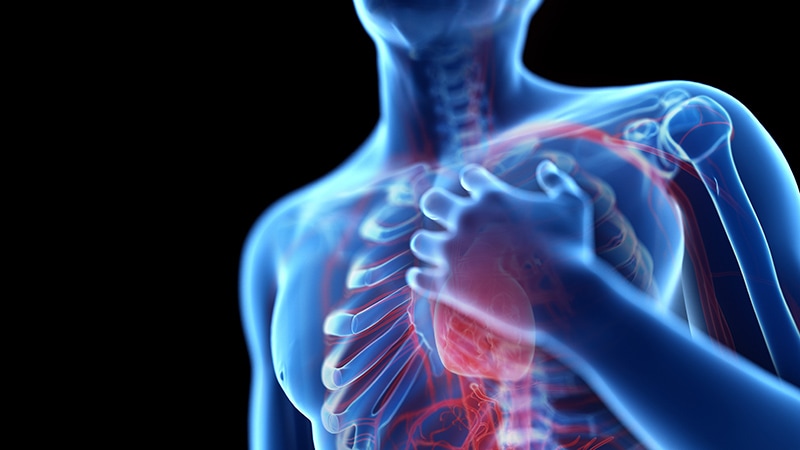Fitness
Noninvasive Cardiac Tests in ED Show No Long-Term Benefit

TOPLINE:
Increased noninvasive cardiac testing (NICT) does not lower the risk for major adverse cardiac events (MACE) within 2 years of emergency visit in patients presenting with chest pain but no acute myocardial injury.
METHODOLOGY:
- This retrospective cohort study examined the link between NICT use and 2-year cardiac outcomes in emergency department (ED) patients with chest pain but no acute myocardial injury from 2013 to 2019 in 21 community EDs in Kaiser Permanente Northern California (KPNC).
- The study involved 144,577 eligible ED patient encounters (mean age, 58 years; 57% female) with 700 emergency physicians over 7 years and HEART (history, electrocardiogram, age, risk factors, troponin) score distribution of 48.2% low risk, 49.2% moderate risk, and 2.7% high risk.
- ED encounters were categorized into low, intermediate, and high NICT referral groups, and emergency physician NICT referral variation was used to account for confounding.
- The primary outcome was MACE, and secondary outcomes were coronary revascularization and MACE including all-cause mortality (MACE-ALL) within a 2-year follow-up period.
TAKEAWAY:
- High and intermediate NICT referrals were not associated with a lower adjusted hazard ratio (aHR) and did not significantly lower the 2-year risk for MACE (aHR, 1.08 and 1.05, respectively) and MACE-ALL (aHR, 1.06 and 1.04, respectively).
- HEART score analysis showed similar differences between NICT referral groups in 30-day cardiac testing and showed no evidence of lower adjusted hazard of MACE or MACE-ALL risk within any three HEART score risk stratum and no significant differences in coronary revascularization rates.
- The overall incidence rates of MACE and MACE-ALL within 2 years were 4.8% and 7.7%, respectively.
IN PRACTICE:
“[W]e did not find that increased NICT referral was associated with a decrease in the hazard of 2-year MACE or MACE-ALL,” the authors wrote. “These findings suggest that routine NICT referral does not improve cardiac outcomes for most ED patients without evidence of acute myocardial injury,” they added further.
SOURCE:
This study was led by Dustin G. Mark, MD, Department of Emergency Medicine, Kaiser Permanente Medical Center, Oakland, California. It was published online on May 23, 2024, in Circulation: Cardiovascular Quality and Outcomes.
LIMITATIONS:
The study population was insured and treated within an integrated healthcare system, limiting generalizability. Higher testing rates and older median age may affect the applicability of results to different populations. Potential undercapture of events and an observational design limit causal inferences.
DISCLOSURES:
This study was supported by the KPNC Community Health program. The authors had no conflicts of interest to disclose.










